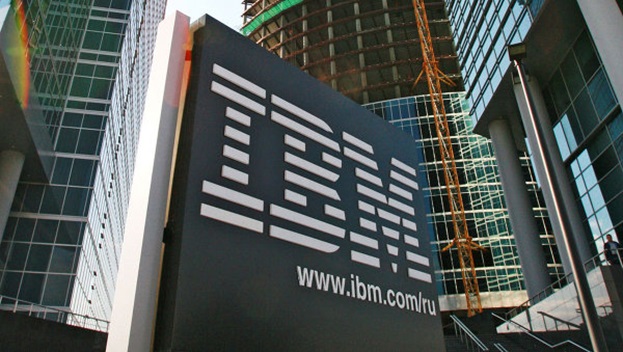Center for collective development of microelectronics in Russia, stage I
The Russian company ITFY and the American IT giant IBM have announced the successful completion of the first phase of the project to create a center for collective development of microelectronics, the launch of which is scheduled for January 2013.
Technically, the project represents a cloud service filled with specialized software, through which Russian and foreign design centers will be able to develop microchips for various projects on favorable terms.

On June 22, 2012, within the framework of the St. Petersburg International Economic Forum, IBM Corporation and five leading Russian innovation companies and development institutions - the Skolkovo Foundation, RUSNANO OJSC, Rostelecom OJSC, RVC OJSC and ITFY - signed a cooperation agreement in the field of microelectronics, which is based on the creation of a new Electronic Technology Center (CET, eng. Electronics Technology Center, ETC). The task of the center was to stimulate public and private investment in the Russian microelectronics industry.
')
The center of collective development of microelectronics is one of the first projects aimed at achieving the goals of CET.

The creation of a collective microelectronics development center takes place in several stages. Following the licensing of IBM CAD development technologies with a topology of 90 nanometers, held in the middle of this year, ITFY decided to sign a contract with IBM to provide server capacity for the cloud-based design environment based on IBM hosting center in Russia and the CIS.
According to Mikhail Lebedev, director of the technological services department at IBM in Russia and the CIS, currently the center has dozens of terabytes of disk space allocated to it, which can be expanded at any time according to customer needs.
Primarily, IBM software products will be placed in the cloud infrastructure, in particular, IBM's CAD development routes with a topology of 90 nanometers and a set of IP blocks (development tools). The cloud will enable companies to manufacture their chips using the most advanced licensed products, simply renting the software and hardware capacity of the environment, which will provide cost advantages compared to buying similar software on the market.
 “Design centers will not need to pay for the entire route, but it will be enough to pay only for the time during which they will use it. In addition, companies will have access to the computing power of the “Collective Development Center”, and they will not have to buy their own.
“Design centers will not need to pay for the entire route, but it will be enough to pay only for the time during which they will use it. In addition, companies will have access to the computing power of the “Collective Development Center”, and they will not have to buy their own.
Even large companies engaged in the production of microelectronics, it is not always profitable to create their own infrastructure for the development of chips. It's easier and cheaper to order a design from a third-party company. That is why the participants in the project to create a “Collective Development Center” believe in its success , ”said Andrei Galitsky, project manager for microelectronics at IBM in Russia and the CIS.
Initially, production will be carried out in factories producing chips using IBM technologies, and the client will receive a tested and ready-to-use chip as a result. In the future, as the pool of manufacturers of microchips, represented in the cloud environment, expands, the customer will have alternatives when choosing a factory.
In addition, with the help of a cloud-based project environment, companies will be able to place orders for microprocessor design, involving the formation of an external project team.

Currently, there are no analogues in the world of similar fabless centers based on a cloud platform open to external developers, which makes it possible to use both IBM routes and routes from other vendors.
The main customers of ITFY see medium-sized design centers (from 20 to 50 developers) who are more comfortable with using the services of renting a cloud-based project environment than buying software, since the cost of it is too high for them - $ 2-3 million for one route .
In conclusion of the article I would like to answer the question of why chips are manufactured using a 90 nanometer process, not 65 or 45. As Leonid Svatkov, president of ITFY, notes, it is now important to show that the idea itself works, after which it will be possible to think about more expensive solutions.
Technically, the project represents a cloud service filled with specialized software, through which Russian and foreign design centers will be able to develop microchips for various projects on favorable terms.

On June 22, 2012, within the framework of the St. Petersburg International Economic Forum, IBM Corporation and five leading Russian innovation companies and development institutions - the Skolkovo Foundation, RUSNANO OJSC, Rostelecom OJSC, RVC OJSC and ITFY - signed a cooperation agreement in the field of microelectronics, which is based on the creation of a new Electronic Technology Center (CET, eng. Electronics Technology Center, ETC). The task of the center was to stimulate public and private investment in the Russian microelectronics industry.
')
The center of collective development of microelectronics is one of the first projects aimed at achieving the goals of CET.

The creation of a collective microelectronics development center takes place in several stages. Following the licensing of IBM CAD development technologies with a topology of 90 nanometers, held in the middle of this year, ITFY decided to sign a contract with IBM to provide server capacity for the cloud-based design environment based on IBM hosting center in Russia and the CIS.
According to Mikhail Lebedev, director of the technological services department at IBM in Russia and the CIS, currently the center has dozens of terabytes of disk space allocated to it, which can be expanded at any time according to customer needs.
Primarily, IBM software products will be placed in the cloud infrastructure, in particular, IBM's CAD development routes with a topology of 90 nanometers and a set of IP blocks (development tools). The cloud will enable companies to manufacture their chips using the most advanced licensed products, simply renting the software and hardware capacity of the environment, which will provide cost advantages compared to buying similar software on the market.
 “Design centers will not need to pay for the entire route, but it will be enough to pay only for the time during which they will use it. In addition, companies will have access to the computing power of the “Collective Development Center”, and they will not have to buy their own.
“Design centers will not need to pay for the entire route, but it will be enough to pay only for the time during which they will use it. In addition, companies will have access to the computing power of the “Collective Development Center”, and they will not have to buy their own. Even large companies engaged in the production of microelectronics, it is not always profitable to create their own infrastructure for the development of chips. It's easier and cheaper to order a design from a third-party company. That is why the participants in the project to create a “Collective Development Center” believe in its success , ”said Andrei Galitsky, project manager for microelectronics at IBM in Russia and the CIS.
Initially, production will be carried out in factories producing chips using IBM technologies, and the client will receive a tested and ready-to-use chip as a result. In the future, as the pool of manufacturers of microchips, represented in the cloud environment, expands, the customer will have alternatives when choosing a factory.
In addition, with the help of a cloud-based project environment, companies will be able to place orders for microprocessor design, involving the formation of an external project team.

Currently, there are no analogues in the world of similar fabless centers based on a cloud platform open to external developers, which makes it possible to use both IBM routes and routes from other vendors.
The main customers of ITFY see medium-sized design centers (from 20 to 50 developers) who are more comfortable with using the services of renting a cloud-based project environment than buying software, since the cost of it is too high for them - $ 2-3 million for one route .
In conclusion of the article I would like to answer the question of why chips are manufactured using a 90 nanometer process, not 65 or 45. As Leonid Svatkov, president of ITFY, notes, it is now important to show that the idea itself works, after which it will be possible to think about more expensive solutions.
Source: https://habr.com/ru/post/164087/
All Articles